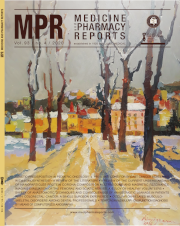A review of the current understanding of nanoparticles protein corona composition
DOI:
https://doi.org/10.15386/mpr-1756Keywords:
nanoparticles, protein corona, nano-biointerfaceAbstract
Upon entering into the biological environments, the surface of the nanoparticles is immediately coated with proteins and form the so-called a protein corona due to which a nanoparticle changes its "synthetic" identity to a new "biological" identity. Different types of nanoparticles have different protein binding profiles, which is why they have different protein corona composition and therefore it cannot be said that there is a universal protein corona. The composition and amount of protein in the corona depends on the physical and chemical characteristics of the nanoparticles, the type of biological medium and the exposure time. Protein corona increases the diameter but also changes the composition of the surface of the nanoparticles and these changes affect biodistribution, efficacy, and toxicity of the nanoparticles.
Downloads
Published
How to Cite
Issue
Section
License
The authors are required to transfer the copyright of the published paper to the journal. This is done by agreeing to sign the Copyright Assignment Form. Whenever the case, authors are also required to send permissions to reproduce material (such as illustrations) from the copyright holder.

The papers published in the journal are licensed under a Creative Commons Attribution-NonCommercial-NoDerivatives 4.0 International License.

